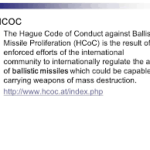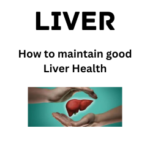PM RELEASES NATIONAL DISASTER MANAGEMENT PLAN

Prime Minister Shri Narendra Modi released the National Disaster Management Plan (NDMP). This is the first ever national plan prepared in the country. The plan aims to make India disaster resilient and reduce loss of lives. This is the first national plan since enactment of the Disaster Management Act in 2005.
The plan is based on the four priority themes of the “Sendai Framework,” namely: understanding disaster risk, improving disaster risk governance, investing in disaster risk reduction (through structural and non-structural measures) and disaster preparedness, early warning and building back better in the aftermath of a disaster.
Salient Features of the Plan
The plan covers all phases of disaster management: prevention, mitigation, response and recovery. It provides for horizontal and vertical integration among all the agencies and departments of the Government. The plan also spells out the roles and responsibilities of all levels of Government right up to Panchayat and Urban Local Body level in a matrix format. The plan has a regional approach, which will be beneficial not only for disaster management but also for development planning.
It is designed in such a way that it can be implemented in a scalable manner in all phases of disaster management. It also identifies major activities such as early warning, information dissemination, medical care, fuel, transportation, search and rescue, evacuation, etc. to serve as a checklist for agencies responding to a disaster. It also provides a generalized framework for recovery and offers flexibility to assess a situation and build back better. To prepare communities to cope with disasters, it emphasizes on a greater need for Information, Education and Communication activities.
CROSS REFRENCES
The Sendai Framework for Disaster Risk Reduction 2015-2030 was adopted at the Third UN World Conference in Sendai, Japan, on March 18, 2015. It is the outcome of stakeholder consultations initiated in March 2012 and inter-governmental negotiations from July 2014 to March 2015, supported by the United Nations Office for Disaster Risk Reduction at the request of the UN General Assembly.
The Sendai Framework is a 15-year, voluntary, non-binding agreement which recognizes that the State has the primary role to reduce disaster risk but that responsibility should be shared with other stakeholders including local government, the private sector and other stakeholders. It aims for the following outcome:
The substantial reduction of disaster risk and losses in lives, livelihoods and health and in the economic, physical, social, cultural and environmental assets of persons, businesses, communities and countries.
With aims at speedy handling of natural and man-made disasters the Government of India On 23 December 2005, enacted the Disaster Management Act, which envisaged the creation of National Disaster Management Authority (NDMA), headed by the Prime Minister, and State Disaster Management Authorities (SDMAs) headed by respective Chief Ministers, to spearhead and implement a holistic and integrated approach to Disaster Management in India.






0 Comments